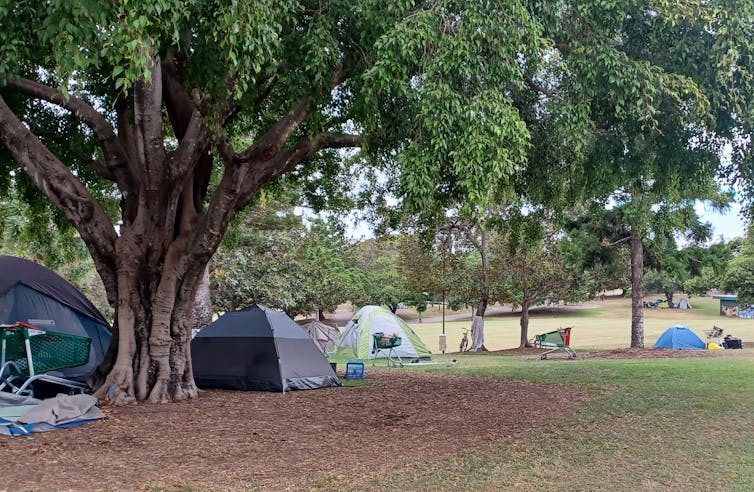News
Australia’s housing crisis is deepening. Here are 10 policies to get us out of it

While home ownership has been the Australian tradition, it should not be the only option for secure and affordable housing. (File Photo: Tierra Mallorca/Unsplash)

Photo: Dorina Pojani, Author provided
As Australia’s housing crisis deepens, governments at all levels are being called on to help. The federal budget will be handed down today, and housing will be a key talking point.
The current public debate about housing is focused on “silver bullet” solutions. What is needed instead is a comprehensive package of bold interventions, coordinated between all levels of government and the private sector.
While home ownership has been the Australian tradition, it should not be the only option for secure and affordable housing. Tenants, particularly long-term or life-long tenants, must be supported as much as aspiring home owners. Rental housing policies, as opposed to policies aimed at construction, have an immediate widespread impact on housing affordability and security of tenure.
5 policies for rental housing
Here are five key measures for the rental market:
1. Caps on annual rent increases. These have been common in Western Europe and parts of North America. Allowable increases should be tied to the inflation rate. This will provide owners with adequate income to maintain the property while providing security for renters.
2. No-fault eviction controls. Such policies typically accompany caps on annual rent increases. They protect long-term tenants from many risks, including revenge evictions of tenants who make a complaint and disruptive digital platforms such as Airbnb. Exceptions could be made in cases in which owners and tenants are living on the same properties, since such transactions may be personal as well as financial.
3. Rent assistance. This can be in the form of housing vouchers delivered directly to tenants. The National Rental Affordability Scheme approach of working with landlords is also effective. The amounts of rental assistance should be adjusted to reflect the actual rental cost trends of recent years.
4. Social and public housing rentals. These include apartments built by the public or non-profit sectors to rent at affordable prices. To avoid stigmatisation and ghettoisation, social housing should house people on a range of incomes. Some buildings may even offer rent-to-own options.
5. Student housing. While education is Australia’s third-largest export, students – both domestic and international – receive little accommodation help. This puts them at risk of exploitation and increases the overall housing pressure. Universities must be required to provide affordable dormitories on campus for the students they enrol.
5 policies for home ownership
Assistance for people who wish to buy a home but have low incomes and lack access to the “bank of mum and dad” must be guided by the principle that affordable housing is a necessity, just like healthcare and schooling. With that in mind, the government should prioritise the following measures:
6. Increases in market-rate housing supply. If enough housing is built to meet buyer demand, and the population remains stable in an area, house prices at the metropolitan level will reduce. That’s the law of supply and demand.
Height bonuses and tax incentives should be provided to developers who build dense housing – especially in inner cities and next to public transport stations. New housing should be in the form of townhouses, condominium towers of varied sizes, and even tiny houses and co-housing compounds where households live as a community with shared spaces.
The negative phenomenon of NIMBYism should be resisted. It stems from upper-income classes who cast themselves as progressives defending the local character while in fact they seek exclusivity.
7. Auxiliary units. Where larger lots cannot be assembled for higher-density housing, the construction of small secondary units next to (or even within) existing houses should be encouraged. To this end, requirements around minimum lot sizes and parking provision should be relaxed. Auxiliary units can serve, among other things, to house older home owners who wish to downsize – hence their traditional name “granny flat”.
8. Inclusionary units. These are units in new developments that are sold at below-market rates to qualifying lower-income households. Offering a percentage of inclusionary units in large-scale developments should be required nationwide. Inclusionary housing would lead to adjustments in land values rather than making projects unviable.
9. Transition housing. This type of housing is for people in crisis situations, such as victims of domestic violence, or who are homeless. It must be free and combined with support services. It largely pays for itself because it offsets the social costs of homelessness and offers major benefits for the beneficiaries.
10. Financial sticks and carrots. Governments should offer assistance with both down payments and loans for first-time buyers. At the same time, investment properties and inheritance properties should be taxed at a higher rate to avoid market distortions and property hoarding by small-scale speculators. Tax rules such as negative gearing should be abolished.
The risks of sticking to the status quo
Why haven’t the problems with our housing system been fixed yet? Why was the crisis allowed to develop in the first place? Because many profit a great deal from a broken housing system – disregarding the inequalities and gentrification waves that come about as a result.
Australian society should come to share an understanding that a dwelling is a space needed for living. It is not a vehicle to store and showcase wealth and extract excessive rents from the “houseless”. Nor is its purpose to sustain class divisions from one generation to the next.
Ignoring the housing crisis will result in the Brazilianization of Australia, changing us into a country of high inequality and exclusion in our lifetime. This represents a dark future in which Australia’s long-held myth of a classless society will be shattered.![]()
Dorina Pojani, Associate Professor in Urban Planning, The University of Queensland
This article is republished from The Conversation under a Creative Commons license. Read the original article.





















